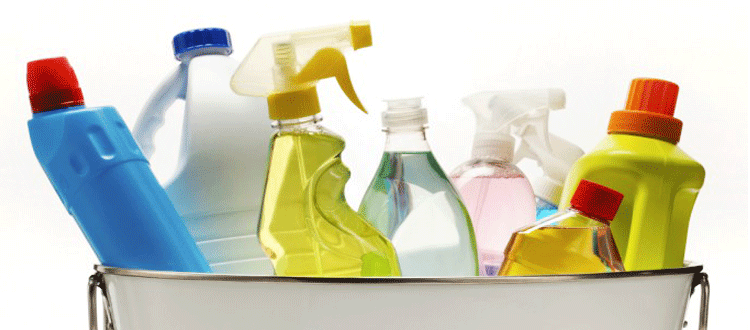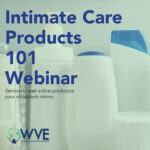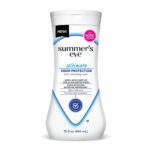9 Things You Didn’t Know About Cleaning Products
 |
|
Ruth Crystal |
Many of us have used with the same humdrum cleaning routine, and cleaning products, for years, without giving it much thought. But it’s important to take a step back and make sure our cleaning is not causing more harm than benefit. Here are 9 facts about cleaning products to keep in mind the next time you tackle your deep clean routine.
1. There is such a thing as disinfectant overkill: Powerful disinfectants and antimicrobial chemicals like quaternary ammonium compounds (quats) are commonly found in household cleaners, despite research warning us about potential serious health consequences, such as increased antibiotic resistance. In many cases, disinfectants are simply unnecessary — plain soap and water will get the job done, with significantly less health risk. For actions to help reduce your exposure and eliminate quats from products and public spaces, click here.
2. Harsh cleaning ingredients have been linked to increased chance of chronic lung disease (COPD) with long term use: A recent analysis of the U.S. Nurses Health Study looked at nurses who use disinfectants weekly, and found they were at a 24%-32% higher risk of developing COPD. Disinfectants examined included bleach, hydrogen peroxide, and quats among others. [1]
3. Household use of spray cleaners and air fresheners during and after pregnancy may affect lung function in children: A 2013 study in Spain found that moms who used spray cleaners and air fresheners in their homes during and after pregnancy were significantly more likely to have children that experienced wheezing and respiratory infections (specifically LRTI) as infants.[2]
4. Fragranced cleaning products can contain hidden synthetic musks, phthalates, and allergens: “Fragrance” can be a combination of up to one hundred chemicals filed under the one ingredient name. Cleaning products with fragrance run the risk of containing allergens, hormone disruptors, and chemicals that lower your ability to fight general toxic exposure.
5. Exposure can take many routes: Be wary of how harsh chemicals are handled and read labels carefully. Other than direct skin exposure, chemicals in cleaning products can be inhaled, absorbed through skin from the air, and ingested if not monitored closely.
6. Long-term and short-term exposure can have serious impacts: For example, long-term exposure to harsh chemicals in cleaning products can lead to chronic effects that include lung cancer, asthma, allergic contact dermatitis, and reproductive effects.
7. You can reduce exposure by making your own non-toxic cleaning products! When you are in control of your cleaning products and their ingredients, you can help put a stop to harmful chemicals entering your home and your body. Swap out harsh chemicals for healthier staples such as vinegar and baking soda, or follow our Green Cleaning recipes here.
8. Ingredient disclosure victories happened in California and New York! California passed game-changing legislation that requires disclosure of ingredients in cleaning products, including disclosure of fragrance ingredients. And New York State also began to require online disclosure of ingredients in household and institutional cleaning products. New Yorkers and Californians won’t be the only ones to benefit. As a powerful market forces, what’s required in in these states will move companies toward similar disclosure practices throughout the nation.
9. Women’s Voices for the Earth has been taking on toxic chemicals in cleaning products for over a decade: Yup! That’s right. And with your help, we can continue this journey down disclosure road. Stay up to date with research, events, and solutions around cleaning product disclosure and safety by subscribing to our newsletter and remaining involved in our work.
For more information check out:
– Reducing Exposure to Disinfectants
– Alternatives to Fragranced Cleaning Products
– How to Throw a Green Cleaning Party
(Blog article updated Jan 2019)
——————
[1] Dumas O et.al. (2017) Occupational exposure to disinfectants and COPD incidence in US nurses: a prospective cohort study. European Respiratory Society (ERS) International Congress 2017: Abstract OA1774. Presented September 11, 2017. Available at: http://k4.ersnet.org/prod/v2/front/program/?e=42
[2] Casas L, Zock JP, Carsin AE, Fernandez-Somoano A, Esplugues A, Santa-Marina L, Tardon A , Ballester F, Basterrechea M and Sunyer J (2013) The use of household cleaning products during pregnancy and lower respiratory tract infections (LTRI) and wheezing during early life. International Journal of Public Health. Vol. 58, pp:757-764. 2013. https://link.springer.com/article/10.1007%2Fs00038-012-0417-2







There are several cleaning products manufacturers that claim to have products that are nontoxic, having natural ingredients or claim to be environment friendly. However, there is no standard definition for these. Such products could still be toxic and cause irritation to the skin, mouth and eyes if not used properly.